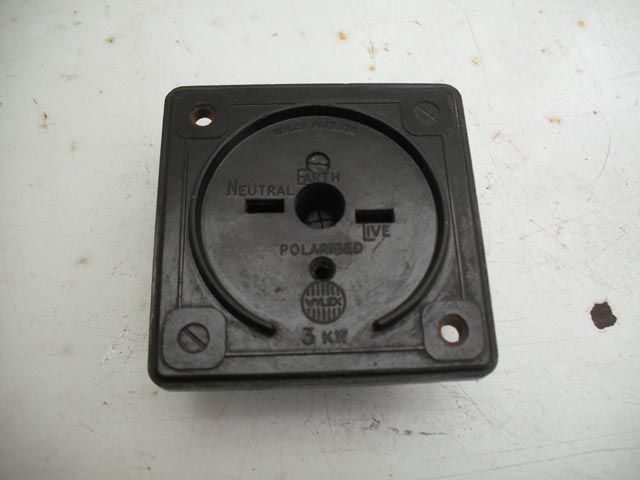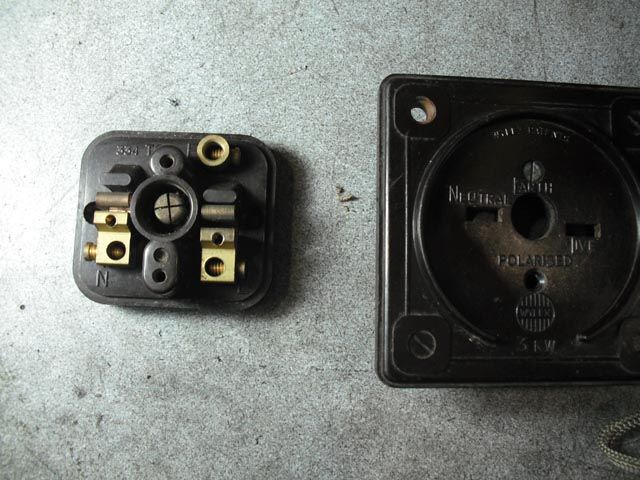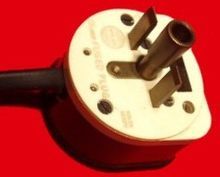And a plug for your socket

From Wikipedia:-
Wylex plug[edit]
Prior to the first British Standard for earthed plugs, George H. Scholes Ltd. of Manchester introduced plugs with a hollow round earth pin between rectangular current-carrying pins in 1926 under the Wylex brand name.[26] The Wylex plugs were initially made in three ratings, 5 A, 10 A and 15 A and were unpolarized (the current carrying pins were on the same centre line as the earth pin). In 1933 an asymmetric polarized version was introduced, with line pin slightly offset from the centre line.[26] In 1934 the dual plug system was introduced with the socket rated at 15 A and three sizes of plug, fused 2 A and 5 A plugs and a 15 A plug. The 15 A "dual plug" incorporated a socket with narrower apertures than a standard Wylex 15 A socket, that accepted only the narrow rectangular pins of the lower-rated plugs.[26] The introduction of a 13 A fused plug, rated as 3 kW.,[90] enabled Scholes to propose their system as a possible solution for the new standard competing with the Dorman & Smith round pin solution, but it was not selected and the completely new BS 1363 design prevailed.[91] Wylex sockets were used in council housing and public sector buildings and, for a short time in private housing. They were particularly popular in the Manchester area although they were installed throughout England, mainly in schools, university accommodation, and government laboratories. In some London schools built in the 1960s they were used as low-voltage AC sockets, typically 12 V, 5 A from a transformer serving one or more laboratories, for microscope lamps etc. Wylex plugs and sockets continued to be manufactured for several years after BS 1363 sockets became standard, and were commonly used by banks and in computer rooms during the 1960s and 1970s for uninterruptible power supplies or "clean" filtered mains supplies.
Edited By Speedy Builder5 on 15/08/2019 07:04:30
john fletcher 1.







